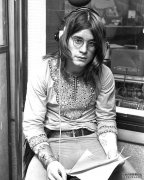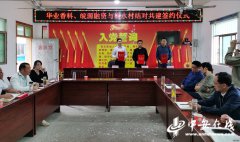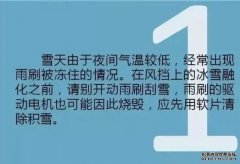精品推荐:清代康熙皇帝之宝
【藏品名称】:清代康熙皇帝之寶
[collection name]: treasure of Emperor Kangxi in Qing Dynasty
【藏品数量】:一块
[collection quantity]: one piece
【藏品起拍价】:34.4万
[collection starting price]: 344000
古代帝王的印章称"宝"或"玺".清代皇帝的宝玺分为两类,一类是治国理政使用的公务宝玺,一类是书画赏玩用的休闲宝玺,虽然作用不同,但都称之为"宝"或"玺".一般来讲历朝国家级的宝玺,即谁当皇帝都传承使用的那套宝玺,称“国宝”而各位皇帝在执政期间,或执政前后而另行刻制的宝玺称“帝宝”。无论是年号宝鉴藏宝、御书、御览宝、宫殿宝或与某些国宝文字内容相同或相似的宝玺都称某皇帝的帝宝。清朝的帝宝始于顺治而盛于康熙,当然鼎盛期还是乾隆,实为国泰民安心旷神怡的产物。清朝的国宝主要是顺治入关前后多尔衮摄政期间搞的,当时可能是忙于东征西讨和初期建国大计,无暇顾及,顺治皇帝只有十几方帝宝。康熙皇帝即位后,刻制了大量御用宝玺,终康熙朝,镌刻了各种御用帝宝一百三十多方,这个数字虽比嗜玺如命的拥有一千八百多方帝玺的乾隆皇帝要逊色得多,但他毕竟是拥有帝宝超百方的第一位皇帝。
The seals of ancient emperors are called "Bao" or "Xi". The seals of Qing Dynasty emperors can be divided into two categories: official seals for governing the country and leisure seals for calligraphy and painting appreciation, Generally speaking, the state-level seals of the past dynasties, that is, the set of precious seals inherited and used by all emperors as emperors, are called "national treasures", while those carved separately by emperors during or before or after their reign are called "imperial treasures". Whether it's the treasure in the Yearbook, the imperial book, the Imperial Palace treasure, or the seal with the same or similar content as some national treasures, it is called the emperor's treasure of an emperor. The imperial treasures of the Qing Dynasty began in Shunzhi and flourished in Kangxi. Of course, it was the product of Qianlong in its heyday. The national treasures of the Qing Dynasty were mainly made during the Regency of Dourgen before and after Shunzhi's entry into the pass. At that time, he was busy with the expeditions to the West and the plan for the early founding of the people's Republic of China. After Emperor Kangxi ascended the throne, he engraved a large number of imperial seals. At the end of the reign of Emperor Kangxi, more than 130 square pieces of Imperial treasures were engraved. Although this figure is much inferior to Emperor Qianlong, who has more than 1800 pieces of imperial seals, he is the first emperor with more than 100 pieces of Imperial treasures

康熙皇帝是清朝最有作为的皇帝之一,也是个非常会生活的皇帝,是个超级大家庭的家长,他前后册立了五十五个妻妾,生下三十五个儿子,二十个女儿,还有孙辈百余人。平时康熙皇帝除了御政于皇宫大内之外,一切生活都远离深宫,虽然清朝规定皇帝寝于养心殿,但康熙皇帝多下榻圆明园的畅春园,日间活动又多在圆明园的佩文斋。佩文斋简直成了康熙皇帝的起居处兼书房,它是该园诸多文化斋馆中最重要的文化场所,康熙朝编纂的六十多种书籍,如《佩文韵府》《佩文斋书画谱》《广群芳谱》《康熙字典》等,均在此筹划和实施。所以康熙皇帝有一整套御用小玺即存在佩文斋,以便随时染翰钤用。
Emperor Kangxi was one of the most influential emperors in the Qing Dynasty. He was also an emperor who could not live very well. He was the parent of a super family. He had 55 wives and concubines, gave birth to 35 sons, 20 daughters and more than 100 grandchildren. Normally, Emperor Kangxi lived far away from the deep palace except for the imperial government in the palace. Although the Qing Dynasty stipulated that the emperor should sleep in the Yangxin hall, Emperor Kangxi usually stayed in the Changchun Garden of Yuanmingyuan Garden and spent his daytime activities in peiwenzhai. Peiwenzhai has become the living room and study of Emperor Kangxi. It is the most important cultural place in many cultural rooms in the garden. More than 60 kinds of books compiled in the Kangxi Dynasty, such as peiwenyunfu, peiwenzhai shuhuapu, guangqunfangpu and Kangxi dictionary, are planned and implemented here. Therefore, Emperor Kangxi had a complete set of imperial seals, that is, peiwenzhai, so as to dye Han seals at any time.

这件清代康熙皇帝之宝雕工古朴纽式特殊,但从纽式和印台来看此宝,极像一方明宝清刻的宝玺,雕刻得端庄凝重,是存世极少的康熙宝玺中的精品。清朝皇帝的御用宝玺,其内容文字含义深远,它们从各自不同的侧面,所映出清朝皇帝们不同的治国之道、思想境界和文学艺术修养。
This treasure carved by Emperor Kangxi of the Qing Dynasty is simple, simple and special in new style. However, from the perspective of new style and printing platform, this treasure is very similar to a seal carved in Ming Dynasty. It is carved solemnly and solemnly. It is one of the rare treasures of Kangxi. The contents and words of the imperial seals of the Qing Dynasty are far-reaching. They reflect the different ways of governing the country, the ideological realm and the literary and artistic accomplishment of the emperors of the Qing Dynasty from different aspects.
- 上一篇:2020年精品推荐 胡公寿人物山水画
- 下一篇:精品推荐:清代招财进宝花钱
- 新闻
- 房产
- 汽车
- 娱乐
- 体育






















